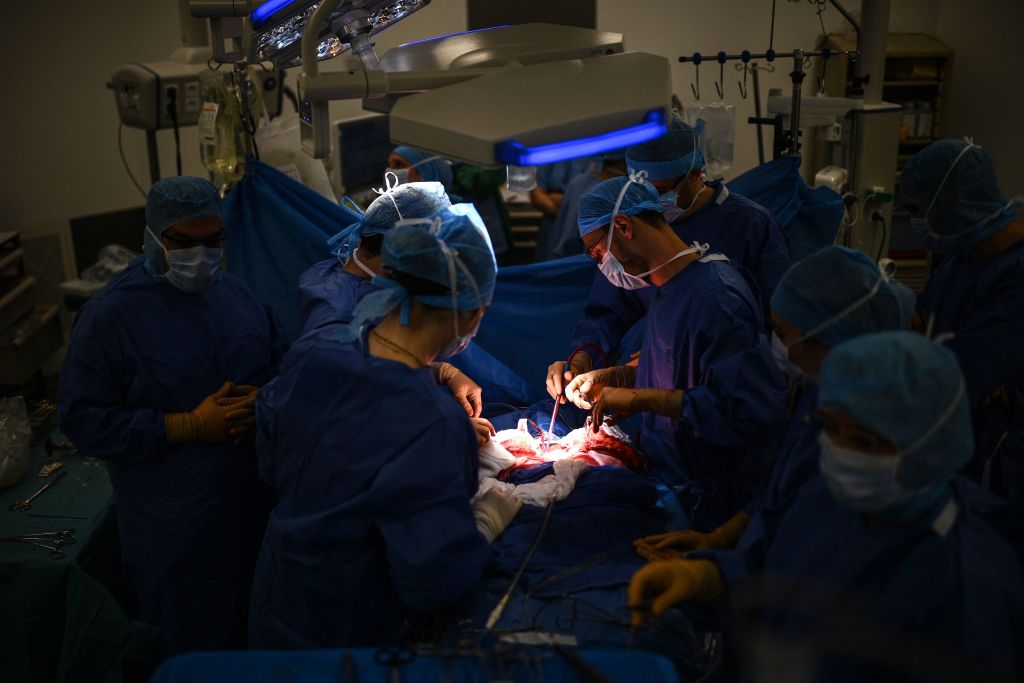It’s the stuff of nightmares. You wake up on a cold metal table, fully conscious but unable to move or communicate as masked figures prep you for some unknown procedure – it turns out to be your last. This isn’t the plot of a Criminal Minds episode, but quite possibly a far too common reality in an American medical system that seeks to harvest organs from donors who are very much alive. It’s the latest example of modern progressive institutions committing harm in the name of help.
A recent New York Times investigation revealed the disturbing lengths procurement agencies go to retrieve organs. Historically, organ donation occurred only from patients declared brain-dead, an “irreversible state.” That changed in the 1990s when agencies began harvesting organs from patients experiencing “circulatory death,” a state that the Times characterized as a subjective “medical judgment call.” Sometimes, the patient could still recover.
The investigation showed that both hospital workers and grieving families come under intense pressure from the agencies, which are driven partly by federal compulsion to increase procurement. As a result, more and more patients have “endured premature or bungled attempts to retrieve their organs.” A total of 55 medical workers in 19 states reported that they’d seen “at least one disturbing case of donation after circulatory death.” Despite growing evidence of malpractice, the transplant system has largely been left to police itself.”
It’s easy to decry this lack of humanity and the utter failure of institutional safeguards. How can one justify saving a life if it requires taking another from someone who can and sometimes does recover? But if you’ve paid any attention to America’s legacy institutions over the past decade, this comes as no surprise. The organ-transplant system is the perfect encapsulation of modern progressive institutions: a niche industry driven by do-gooderism, so much so that extreme moral belief in the mission leads to actual grievous harm.
At the individual level, this requires institutional cogs embracing a willful blindness to collateral damage. We saw this most clearly during Covid, when abstract notions of “safety” drove health bureaucrats to double down on ineffective and outright harmful practices. It didn’t matter that seniors died alone, that children were psychologically damaged or that countless livelihoods were ruined – the covidcrats felt justified under the terms of their own moral parameters; it was all for the greater good.
The same dynamic is playing out in the transplant industry. People join to “save lives,” and their institutional mission begins to blur into a moral crusade. Within their narrow parameters, saving lives is measured in the raw number of organs harvested, and so too their own sense of goodness. Accounting for collateral damage detracts not only from their mission, but from their own sense of self, and any lives lost in the process become, in Stalin’s words, a mere statistic – a morally justified obstacle on the road to absolute good.
Institutions inevitably fall apart when they’re driven by an ineffective sentimentality that’s nevertheless utterly sure of itself; that’s a major reason why public trust in US institutions hovers critically low.
So, to keep the house of cards from crumbling entirely, there must be an obsessive level of institutional gatekeeping, which despite a veneer of credentialism is merely meant to prevent outside accountability. This too became painfully clear during Covid, as the medical establishment withheld countervailing data from the public, insisting they weren’t qualified to have an opinion while maligning dissenting voices within their own ranks.
We can see this instinct in the transplant industry as well. It’s no surprise that few of the nation’s 55 organ-procurement organizations spoke to the Times for the story; they mostly fell back on pablum that deflected any possible malfeasance solely to the “hospital team” while insisting any negative portrayal is “inaccurate.” It seems we’re just one public-relations strategy meeting away from a joint statement on the harm of disinformation.
Internal data on possible safety lapses remains closely guarded. The mother of one botched transplant patient didn’t learn the truth of what happened to her daughter until she spoke with the Times over a year later. Still, it’s impossible to know whether circulatory death patients feel pain or distress in their final moments, and after years of incentivizing this behavior, the federal government is only recently beginning to play an oversight role.
It’s an institutional instinct to close ranks in the face of scrutiny, but it’s one that’s ultimately self-defeating. One bad incident can lead to a whirlwind news cycle, leading people to remove themselves from the transplant registry entirely. But transparency and accountability remain the only way to recover trust; owning up to a few bad incidents over the years would certainly have had less of a negative impact than this news story is now having. And it will be a much tougher road back for the agencies.


























Leave a Reply